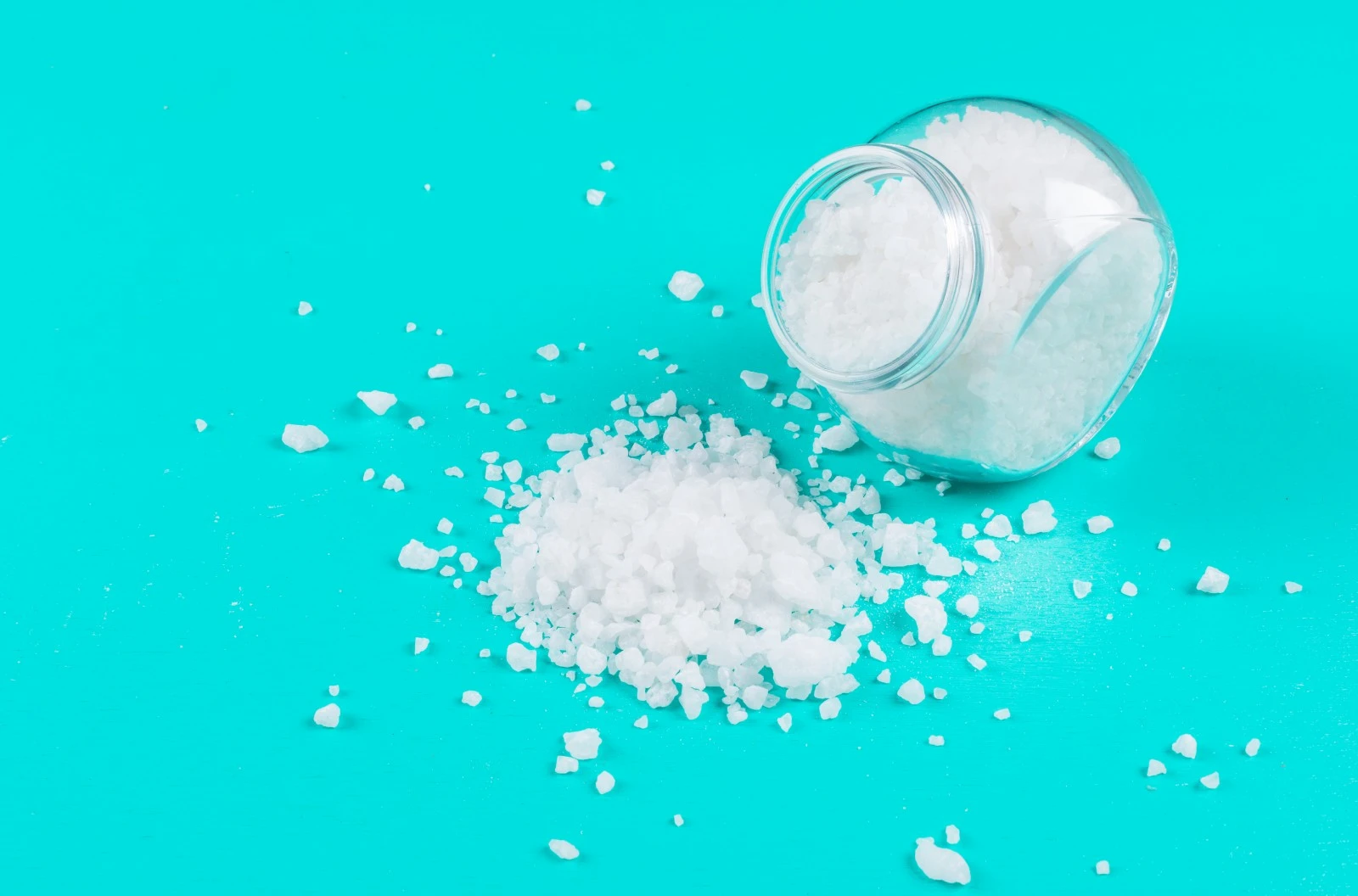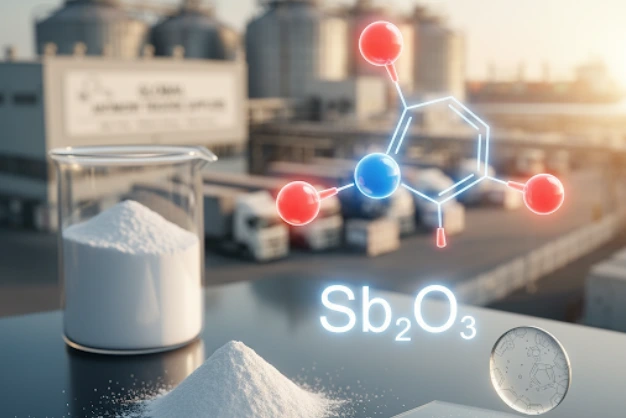Chelating agents are chemical compounds that form stable complexes with metal ions by binding to them through multiple points. This process, known as chelation, involves the agent “grabbing” metal ions, effectively neutralizing their reactive properties. This ability to sequester metals makes chelating agents essential in various formulations and processes.
Chelating agents play a vital role in preventing metal ion-related issues across numerous applications. In cleaning products, they prevent metal ions from interfering with detergents, enhancing cleaning efficiency. In cosmetics, chelating agents stabilize formulations by binding trace metals that could cause degradation. In pharmaceuticals, they are used to enhance the stability and efficacy of medications. Comparing Sodium Gluconate vs. EDTA, both agents excel in these roles, but their specific properties and applications differ, which we’ll explore further in this article.
Solubility: Highly soluble in water, making it easy to use in various aqueous formulations.
Biodegradability: Sodium Gluconate is readily biodegradable, posing minimal environmental impact.
pH Range: It is effective over a broad pH range but forms the most stable complexes at alkaline pH levels.
EDTA is a polyamino carboxylic acid with the formula C10H16N2O8. Its structure features four carboxyl groups and two amine groups, allowing it to bind tightly to metal ions through multiple coordination sites.
Solubility: Soluble in water and commonly used in its disodium or tetrasodium salt forms.
Stability: EDTA forms very stable complexes with most metal ions across a wide pH range, particularly effective in both acidic and alkaline environments.
Versatility: Used in a variety of industries due to its strong chelating ability and stability.
Both Sodium Gluconate and EDTA are effective chelating agents that bind metal ions to prevent undesirable reactions in various products and processes.
They are both water-soluble, facilitating their use in aqueous formulations.
Chemical Structure: Sodium Gluconate has a simpler structure with hydroxyl groups, whereas EDTA has a more complex structure with multiple carboxyl and amine groups, leading to stronger and more versatile chelation properties.
Environmental Impact: Sodium Gluconate is more biodegradable and environmentally friendly compared to EDTA, which can persist in the environment.
Stability: EDTA forms more stable complexes over a wider pH range, making it suitable for a broader range of applications compared to Sodium Gluconate.
In the food industry, Sodium Gluconate serves as a stabilizer and sequestrant. It helps maintain the quality and shelf life of various food products by binding metal ions that could cause spoilage or discoloration. Its non-toxic nature makes it suitable for use in food processing.
EDTA is employed in chelation therapy to treat heavy metal poisoning by binding to metals like lead and mercury, facilitating their excretion from the body. Additionally, EDTA is used in cosmetics to stabilize formulations and improve the shelf life of products by preventing metal-catalyzed oxidation.
Sodium Gluconate: Favored in environmentally conscious applications such as food processing and pharmaceuticals.
EDTA: Preferred in situations requiring strong chelation across a wide pH range, such as industrial cleaning and water treatment.
By understanding the specific uses and applications of Sodium Gluconate vs. EDTA, you can better choose the appropriate chelating agent for your needs.
When comparing Sodium Gluconate vs. EDTA, both agents are effective chelators, but their performance varies based on environmental conditions. Sodium Gluconate excels in alkaline environments, making it suitable for applications like concrete admixtures and food stabilization. However, it is less effective in acidic conditions, limiting its versatility.
By understanding the chelation efficiency of Sodium Gluconate and EDTA in different environments, you can choose the most appropriate agent for your specific needs, considering factors such as pH levels and the types of metals present.
Environmental Concerns EDTA, while highly effective as a chelating agent, raises significant environmental concerns. It is not readily biodegradable and can persist in the environment for long periods. This persistence can lead to the accumulation of EDTA in water bodies, potentially disrupting ecosystems and harming aquatic life. Additionally, EDTA can mobilize heavy metals in the environment, increasing their bioavailability and potential toxicity. These factors necessitate careful consideration of its use and disposal to mitigate environmental impact.
Ecological Impacts and Safety Considerations When comparing Sodium Gluconate vs. EDTA, the ecological impacts and safety considerations are pivotal. Sodium Gluconate’s biodegradability and non-toxic nature make it a more environmentally friendly option. It decomposes easily, reducing the risk of long-term environmental contamination and posing less threat to human health and wildlife.
Overall, while both agents are effective in their respective applications, Sodium Gluconate is generally the safer and more sustainable choice from an environmental perspective. Understanding the differences in their ecological impacts helps in making informed decisions about their use, balancing effectiveness with environmental responsibility.
Cost and Market Availability EDTA, while slightly more expensive than Sodium Gluconate, remains competitively priced given its strong chelating properties and versatility. It is produced on a large scale and is readily available in various forms, including its disodium and tetrasodium salts. The higher production costs are offset by its extensive utility in cleaning products, water treatment, and medical applications, where its robust performance justifies the price. The market availability of EDTA is also high, ensuring that industries relying on its chelating capabilities can obtain it without difficulty.
Overall, both Sodium Gluconate and EDTA are readily available, but the choice between them often hinges on the specific requirements of the application, cost considerations, and the desired performance characteristics. Understanding these factors helps in selecting the most suitable chelating agent for your needs.
In the food industry, Sodium Gluconate is commonly used as a sequestrant, stabilizer, and preservative. It helps maintain the quality and shelf life of food products by binding metal ions that could cause spoilage or discoloration, and its non-toxic nature ensures safety in food processing.
In pharmaceuticals, both Sodium Gluconate and EDTA play significant roles. Sodium Gluconate is used to stabilize active ingredients and enhance the solubility of certain drugs. It is also utilized in treatments for metal poisoning, aiding in the safe removal of excess metals from the body. EDTA, on the other hand, is widely used in chelation therapy to treat heavy metal poisoning by forming stable complexes with metals like lead and mercury, facilitating their excretion from the body. Additionally, EDTA stabilizes pharmaceutical formulations by preventing metal-catalyzed oxidation.
When comparing Sodium Gluconate vs. EDTA in industry-specific contexts, both agents offer unique advantages tailored to specific needs. Sodium Gluconate’s cost-effectiveness and biodegradability make it ideal for the construction and food industries. Conversely, EDTA’s robust chelation capabilities and stability are crucial for the cleaning, cosmetics, and pharmaceutical sectors. Understanding these preferences helps in selecting the most appropriate chelating agent for different industrial applications, ensuring optimal performance and sustainability.
By understanding the specific uses and advantages of Sodium Gluconate and EDTA in various industries, businesses can make informed decisions about which chelating agent best suits their needs, balancing effectiveness with environmental responsibility.
Choosing the right chelating agent depends on specific needs. For environmentally friendly and cost-effective options, especially in food and construction, Sodium Gluconate is recommended. For applications requiring strong and versatile chelation, EDTA is the better choice despite its environmental concerns.





